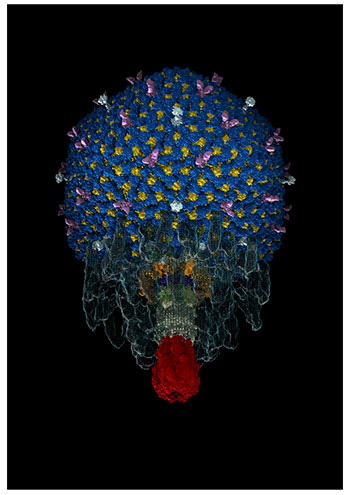Department of Chemistry research appears in one of the world’s most prestigious scientific journals
The research paper ‘Structural Atlas of a human gut Crassvirus’ by Dr Oliver Bayfield and Professor Fred Antson appeared in Nature in early May.

Funded by the Wellcome Trust and carried out in the York Structural Biology Laboratory, the team’s research focused on a Crassvirus, the most abundant and one of the most genetically diverse virus families in the human gut.
Treatments
Professor Antson says he hopes the research findings could be used in the development of diagnostics techniques for detecting bacterial infections, and possibly developing new treatments for gut disorders.
He said: “The research will inform our understanding of how these viruses control bacterial populations in the gut and hence how they impact our health.
“The findings will also inform the development of new diagnostic tools for detecting bacterial infections and, potentially, other diseases of the gut. The research may also impact the development of new therapies for treating gut disorders caused by harmful bacteria.”
Professor Antson says the team will now focus on learning how the Crassvirus multiplies and spreads, as well as looking closely at related viruses.
“We’ll also study close relatives of these viruses, found in environmental samples such as sea water and soil, to understand evolutionary relationships, and potentially how they could be used for bioremediation and other environmental applications.”
Recognition
Dr Oliver Bayfield says recognition in Nature could itself be a pivotal moment in increasing understanding of the Crassvirus.
“Obviously it is a huge honour to have our work accepted for publication in a prestigious and storied journal such as Nature.
“Hopefully this will allow our findings to reach scientists across a variety of disciplines and ultimately inspire further research to help understand this fascinating group of viruses.”
- Read ‘Structural Atlas of a human gut Crassvirus’
- Read the Nature briefing
Notes to editors:
The team at York also involved Dr Dorothy Hawkins, at the time a PhD student, and Jake Smith, a MChem project student. The project benefitted from collaborations with Professor Colin Hill and Andrey Shkoporov, both microbiologists at University College Cork in Ireland, and with Eugene Koonin, a biologist at the National Center for Biotechnology Information in USA.